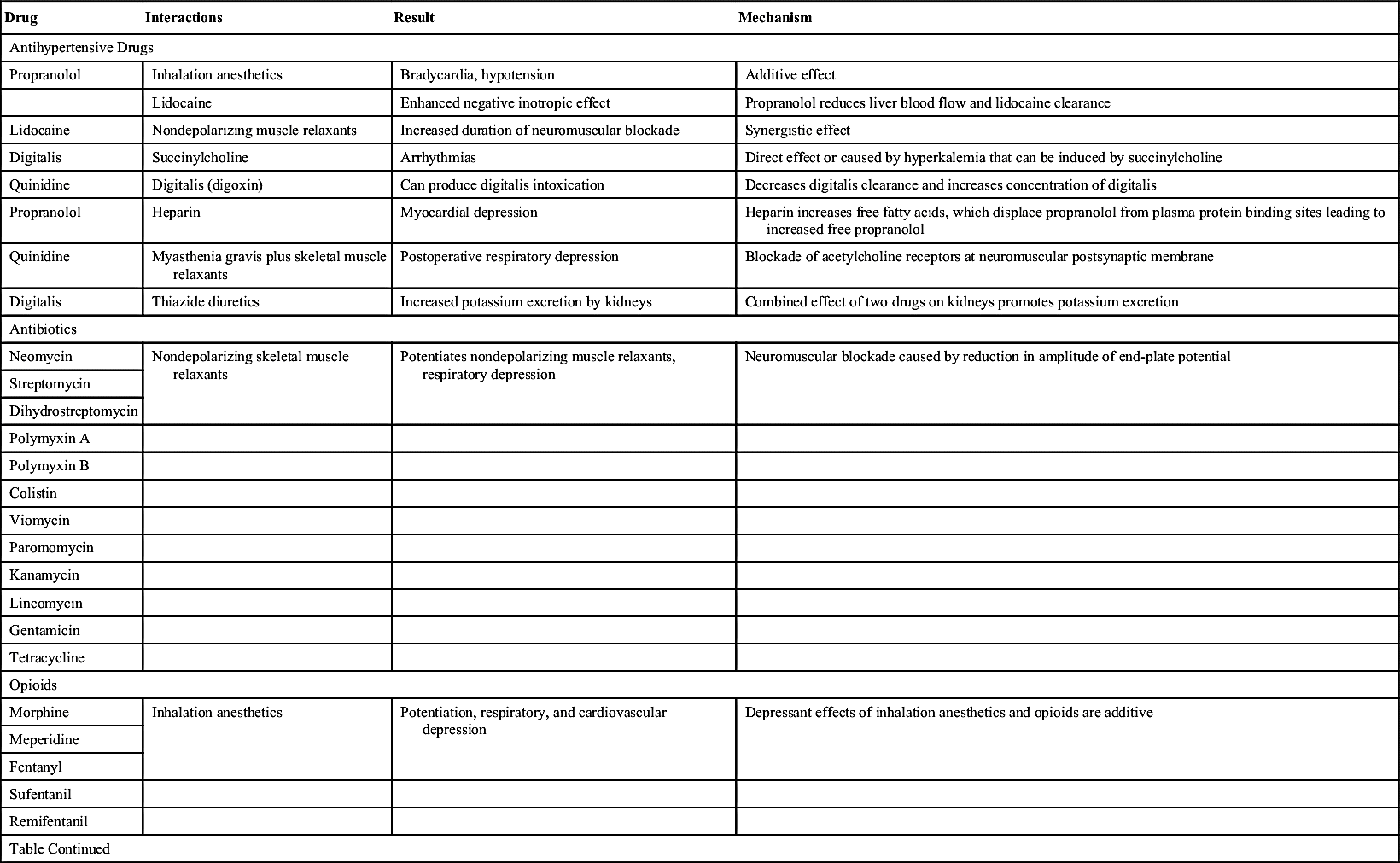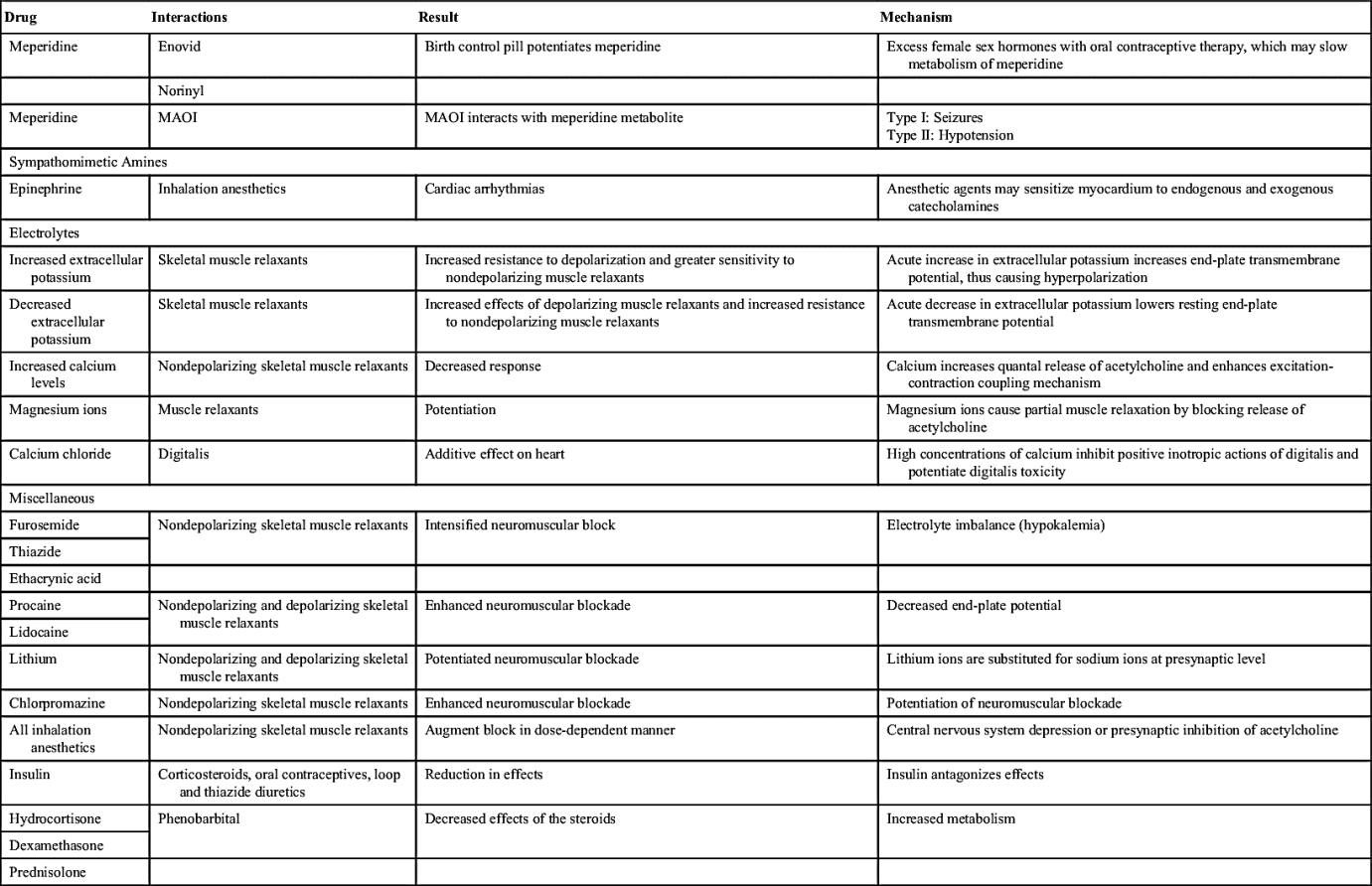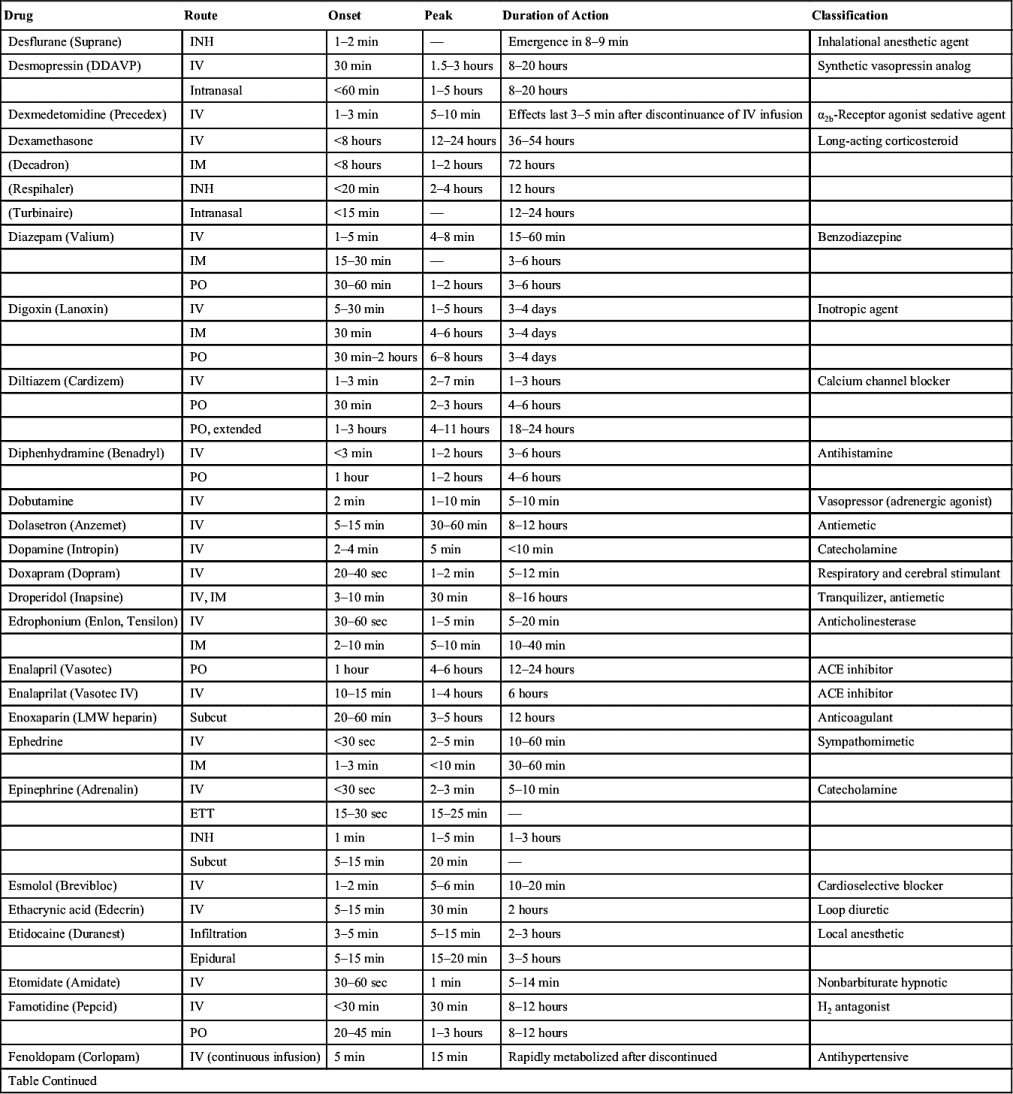
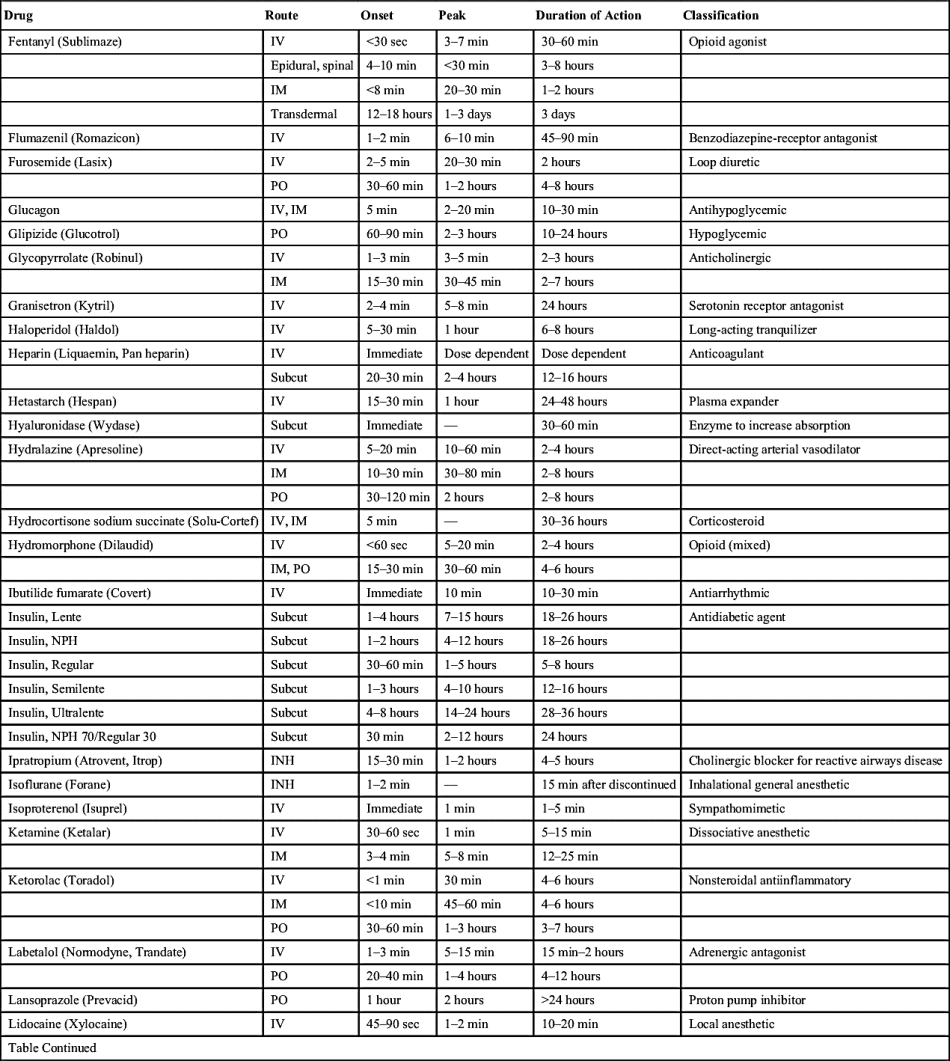
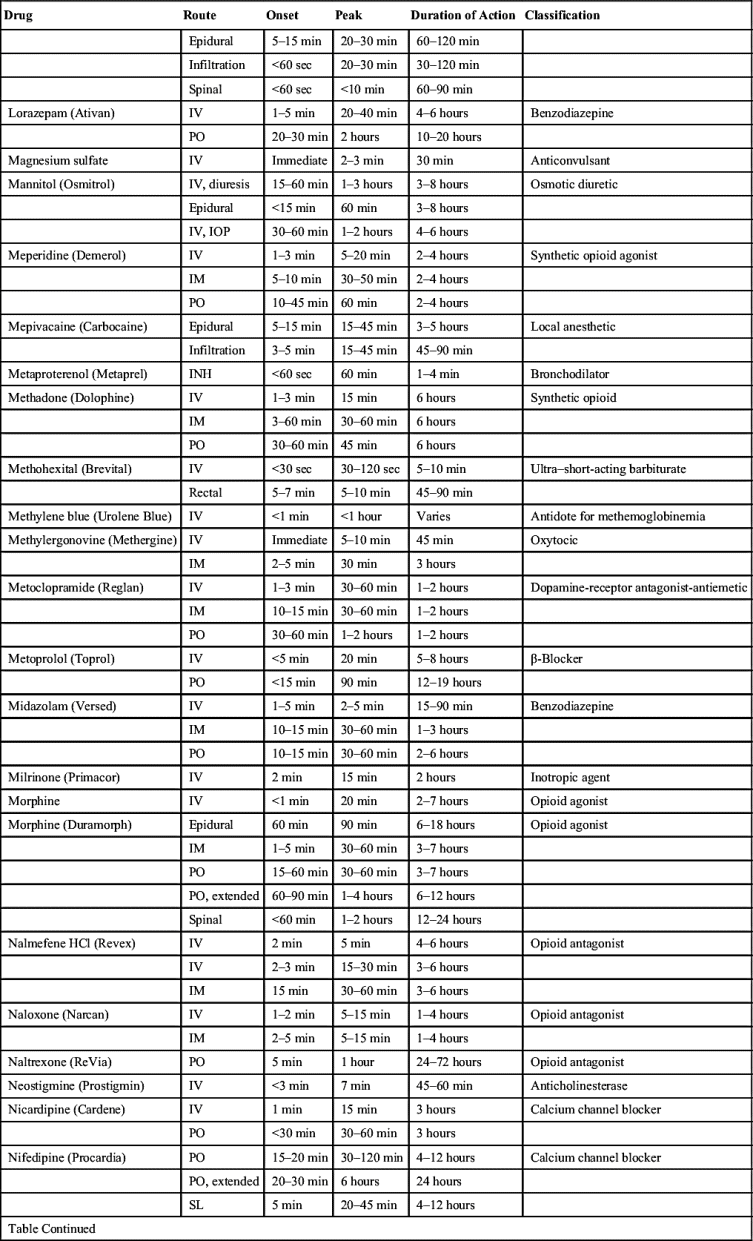
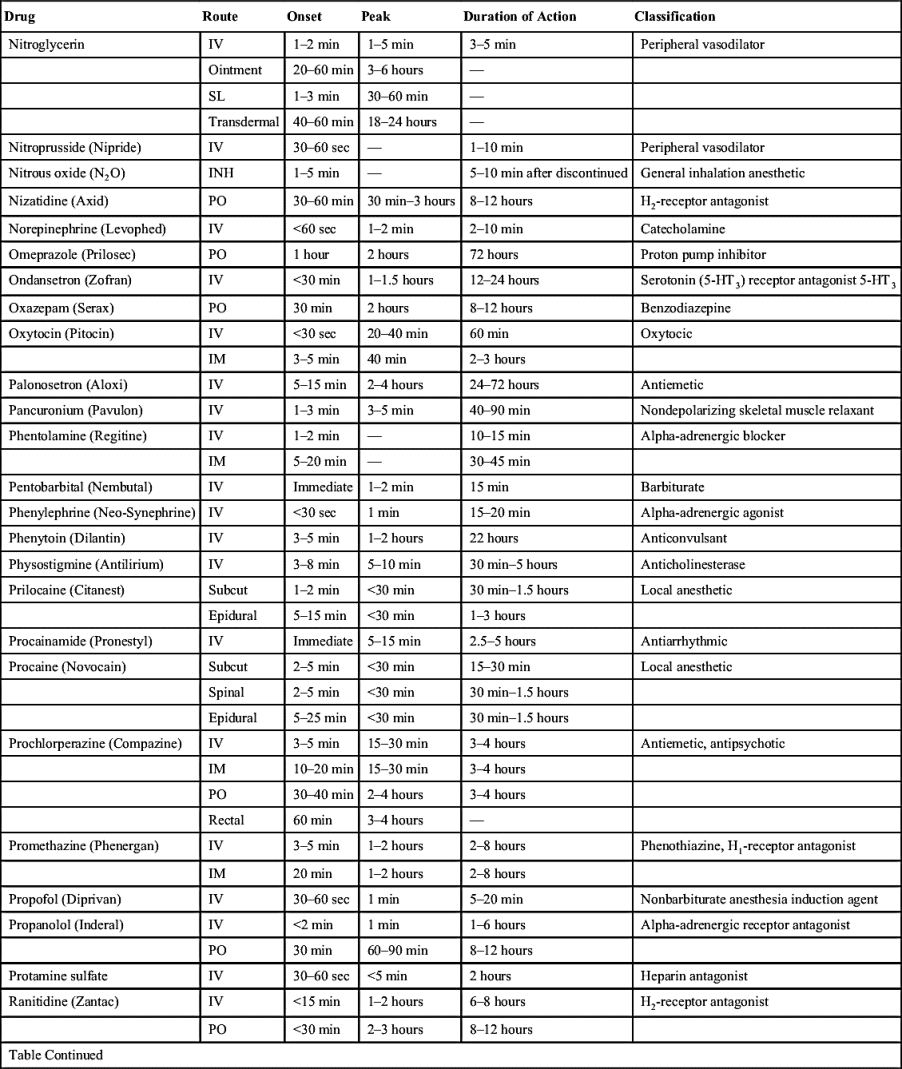
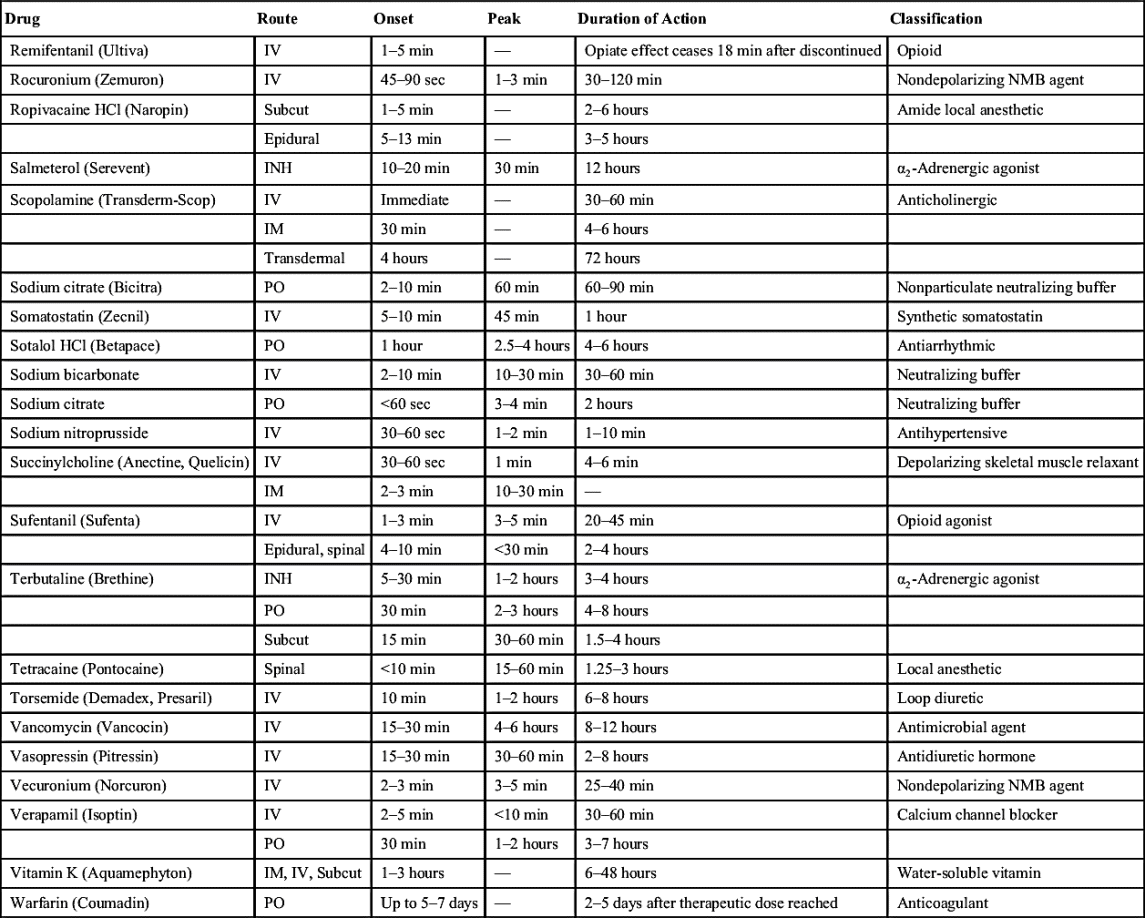
Adapted from Nagelhout JJ, Plaus KL: Handbook of nurse anesthesia, ed 5, St. Louis, MO, 2014, Saunders.
Distribution
Pharmaceutical incompatibility is one type of pharmacokinetic distribution interaction. This situation occurs, for example, when one drug reacts chemically with another. In this situation, when one drug (e.g., aspirin) displaces another drug (e.g., phenytoin) from plasma protein-binding sites, the blood concentration of the free drug is increased, which can result in altered blood levels.12
Biotransformation
When patients are administered enzyme-inducing agents, such as barbiturates and the antibiotic rifampin, the activity of the enzyme systems of the liver is increased. This increase results in a more rapid metabolism and excretion of drugs metabolized by a particular liver enzyme system. For example, if a barbiturate is administered to a patient receiving a stabilized dose of the anticoagulant warfarin, the warfarin blood level may be reduced, which can result in a lowered prothrombin time. If this situation occurs (stabilization with an anticoagulant and administration of an enzyme-inducing agent) and the barbiturate is discontinued, the nurse must monitor the patient for the potentially more serious problem of excessive anticoagulation and hemorrhage.
The drug cimetidine (Tagamet) is sometimes administered before surgery for a reduction in the amount of gastric secretion and for a possible increase in the gastric pH. Cimetidine is a potent inhibitor of drug metabolism and can slow the elimination of antipyrine, warfarin, diazepam, and propranolol. This effect results in an increased drug concentration and enhanced pharmacologic effect of the latter drugs.13
Excretion
The pharmacokinetic parameters of concern in excretion relate to one drug facilitating or hindering the excretion of another. An example occurs when probenecid is administered together with penicillin. The outcome of this interaction is that the pharmacologic actions of penicillin are prolonged because probenecid delays the excretion of penicillin. This effect can be considered a desirable drug-drug interaction.12
Pharmacodynamic Interactions
Pharmacodynamic interactions occur when one drug alters the pharmacologic effects of another drug. For example, when a patient is treated with an antibiotic such as an aminoglycoside or polymyxin and receives a skeletal muscle relaxant such as rocuronium, a prolonged neuromuscular blockage can result. Another example is a patient who receives thiazide diuretic therapy and has resultant hypokalemia. If the patient is administered digitalis, digitalis toxicity can result.14
Drug-Drug Interactions and the Perianesthesia Care Unit
Antibiotics
Aminoglycoside and polymyxin antibiotics have been reported to interact with some anesthetic agents and skeletal muscle relaxants. Streptomycin and the other aminoglycoside antibiotics gentamicin, tobramycin, amikacin, neomycin, kanamycin, and paromomycin can produce a partial neuromuscular blockade by inhibiting the release of acetylcholine from the presynaptic membrane and by altering calcium mobility in muscles. When a nondepolarizing skeletal muscle relaxant such as rocuronium is administered to a patient who receives an aminoglycoside antibiotic, the neuromuscular blockade is intensified, and pharmacologic reversal is difficult.9
Opioids
Probably the most significant and dangerous drug-drug interaction that can occur in the perianesthesia period is the interaction between meperidine (Demerol) and monoamine oxidase inhibitors (MAOIs). The presumed physiologic dysfunction is that the MAOI decelerates the breakdown of meperidine because of N-demethylase inhibition by the MAOI. The result of the interaction between these two drugs is either a type I response that includes seizures, agitation, rigidity, and hyperpyrexia or a type II response that is depressive in nature and characterized by hypotension, respiratory depression, and coma.
Every perianesthesia nurse has probably observed the drug-drug interaction between opioids administered in the PACU and the inhalation anesthetic agents administered in the operating room. If the anesthetic agent has not been completely eliminated and the patient is administered an opioid, an additive effect between the two drugs occurs. The outcome of this interaction is usually respiratory depression resulting from the combined depressant effects.
If the two drugs have interacted in this way, an opioid antagonist such as naloxone (Narcan) can be administered to reverse the respiratory depression produced by the opioid. However, naloxone does not reverse respiratory depression produced by inhalation anesthetic agents such as sevoflurane, desflurane, or isoflurane.15
Stay updated, free articles. Join our Telegram channel

Full access? Get Clinical Tree


